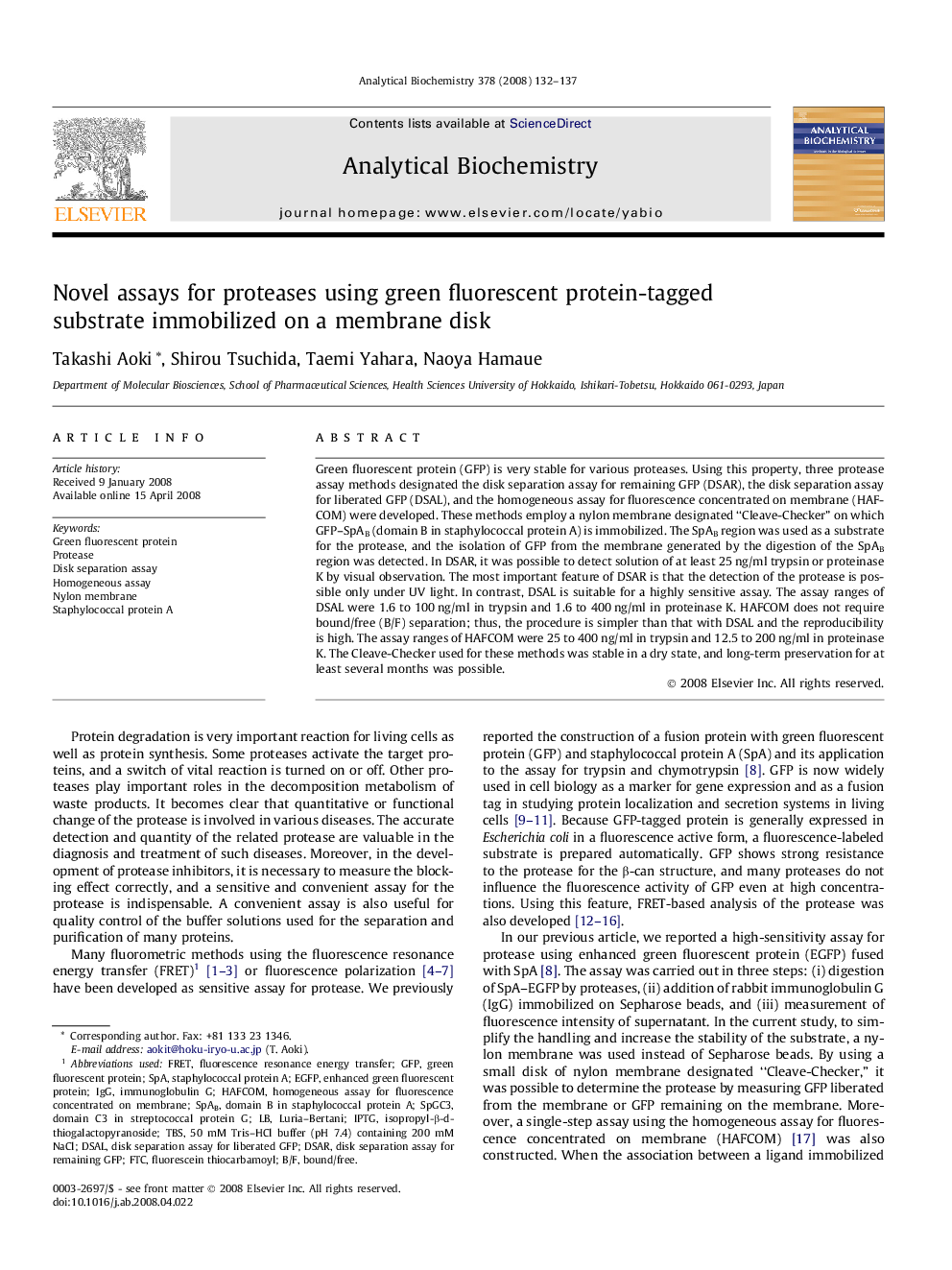| Article ID | Journal | Published Year | Pages | File Type |
|---|---|---|---|---|
| 1175369 | Analytical Biochemistry | 2008 | 6 Pages |
Green fluorescent protein (GFP) is very stable for various proteases. Using this property, three protease assay methods designated the disk separation assay for remaining GFP (DSAR), the disk separation assay for liberated GFP (DSAL), and the homogeneous assay for fluorescence concentrated on membrane (HAFCOM) were developed. These methods employ a nylon membrane designated “Cleave-Checker” on which GFP–SpAB (domain B in staphylococcal protein A) is immobilized. The SpAB region was used as a substrate for the protease, and the isolation of GFP from the membrane generated by the digestion of the SpAB region was detected. In DSAR, it was possible to detect solution of at least 25 ng/ml trypsin or proteinase K by visual observation. The most important feature of DSAR is that the detection of the protease is possible only under UV light. In contrast, DSAL is suitable for a highly sensitive assay. The assay ranges of DSAL were 1.6 to 100 ng/ml in trypsin and 1.6 to 400 ng/ml in proteinase K. HAFCOM does not require bound/free (B/F) separation; thus, the procedure is simpler than that with DSAL and the reproducibility is high. The assay ranges of HAFCOM were 25 to 400 ng/ml in trypsin and 12.5 to 200 ng/ml in proteinase K. The Cleave-Checker used for these methods was stable in a dry state, and long-term preservation for at least several months was possible.
